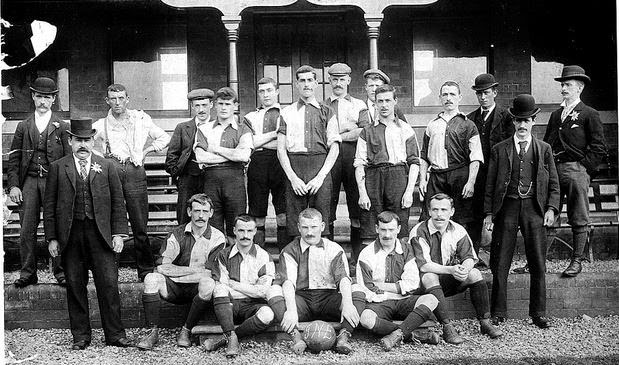The Legends of Football - Part One - Lost Heroes, Treasured Pride by Matthew Cox
Sir Samuel Hill-Wood,
born on 21 March 1872
the son of Samuel Wood and Anne
Kershaw Sidebottom, lived a long and prosperous, public life.
From early childhood
Samuel Hill-Wood known locally as “Sammy” showed an unbelievable understanding
of his family’s cotton business and how it was constructed and managed.
Inspired by his father and grandfather to continue the business he was sent to
be educated at Eton
College
 |
| Sir Samuel Hill-Wood in 1928 |
In the early 1800s the
game of football was used as tool to encourage young men to go to church and to
maintain a “team” spirit on the day of rest. However by the late 1800s the sport
had developed not only into a national game but an entertaining enterprise.
Samuel Hill Wood had spotted not only an opportunity for investment, but also
advertisement on a national scale. When Sammy turned 22 he injected a huge sum
of money into the club, big enough in fact to start paying wages and turned the
club professional.
This same year also
saw Sammy make his debut in cricket playing for the Derbyshire County
Sammy loved the attention he and the club were getting so much so he boosted the club yet again with another financial push.
This gave them the
edge they needed drafting in some of the best players from teams from all over
the land and even overseas. Building in confidence the team began to draw in
huge crowds which brought the money rolling in. This could be seen when Glossop
North End played local rivals Manchester
City North Road
There was a huge
uproar not just nationally but worldwide when Glossop North End made it into
top flight football. In 1899 the nation stared in disbelief that a small town
deep within the hills were battling it out on the pitch with some of the
nation’s top teams from some of the wealthy cities. This could not have been
possible without Samuel Hill Woods astounding insight, a true pioneer of sport.
Sammy continued to work closely with the club even taking them to a F.A Cup
Quarter Final in 1909.
In 1910 Sammy began a
new career as a conservative MP for the High Peak North Road
Throughout the years
to this day the legend of Sir Samuel Hill-Wood remains. As we celebrate entering the Final at Wembley of the FA Vase, the “Hillsmen” are a distinct reminder of that great pioneer. Just think
Sammy had his own football club at the age of 18 and in the space of 14 years
his club, Glossop was and still is to this day the smallest town in England
By Matthew Cox
Follow me on Twitter: @Matthew_R_Cox or @ GlossopTours for more updates about this historic club.
By Matthew Cox
Follow me on Twitter: @Matthew_R_Cox or @ GlossopTours for more updates about this historic club.

